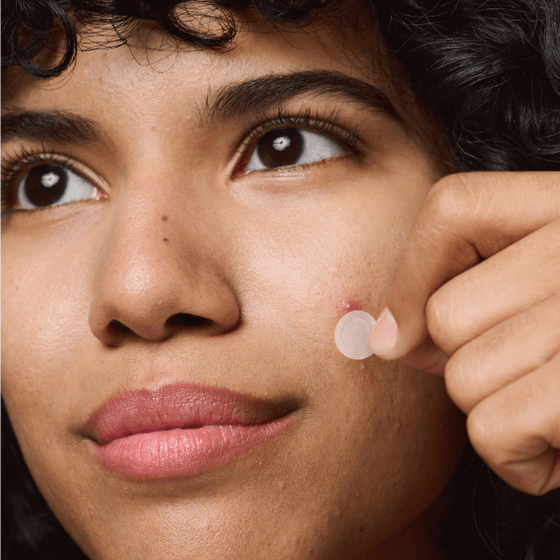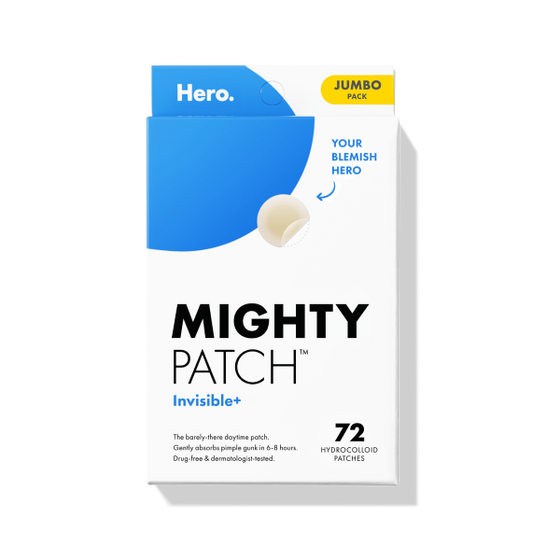
At the first sign of a pimple, for many of us makeup-lovers, our first instinct is to run to our makeup bag and cover up the zit with foundation and concealer. After all, we deserve to look #flawless at all times. But, is it a good idea to slather on makeup on acne? Or, is wearing makeup over breakouts doing more harm than good? Keep reading to learn when it’s okay to wear makeup over a breakout and when it’s not, plus the guidelines for choosing the best makeup for acne.
So really, should you wear makeup over acne?
The short answer is, ideally, no. Most dermatologists recommend not applying any makeup to affected areas. Doing so might make the breakout worse. Some makeup products contain ingredients that can further clog up your pores, cause more inflammation, and make the breakup last longer.
Avoiding makeup is especially important if the pimple is open, oozing, or bleeding. Covering up the pimple with makeup will block its ability to breathe, which is essential for the healing process. You’re better off waiting a few days for it to clear up (or put on a pimple patch which works in mere hours, just saying), and once it’s looking better then, by all means, get all dolled up.

How to cover up acne with makeup
With that said, sometimes, you really have to cover up a zit. Maybe you have an important meeting or special event. We get it. If that’s the case, there are a few guidelines to follow to ensure you do so safely and effectively.
- Treat the acne first. Skincare comes before makeup, always. So before you apply any makeup on the area, treat it first. Shameless plug: Our Mighty Patch Invisible+ is great, nay, excellent, for this. The acne patch delivers hydrocolloid to the pimple to remove impurities, and as its name suggests, it’s undetectable. After you pop it on, you won’t even feel the need to cover up the pimple with makeup.
- Avoid primers or powder foundations. They can clog up your pores and create more inflammation.
- Wash your makeup off at night. Sleeping with your makeup on can lead to more breakouts. Use an oil-free makeup remover to get it all off before you hit the hay every night.
- Clean your brushes. Makeup brushes and sponges are a hub for bacteria, dead skin cells, and oil. Ensure you’re washing them at least once per week.
- Choose acne-friendly makeup. The best makeup for acne is lightweight and oil-free. And most importantly, it needs to be non-comedogenic makeup. Non-comedogenic means it doesn’t contain pore-clogging ingredients. However, there is no industry regulation for the term. Brands can pop it on a label all willy nilly without actually testing to see if the product indeed doesn’t clog pores. So when you’re shopping for makeup, put on your detective hat and check the label carefully. Common skin-clogging culprits include petrolatum, coconut oil, isopropyl myristate, myristyl myristate, and acetylated lanolin.
But wait, there’s a caveat
Now, here’s where it gets tricky. The makeup you’re wearing could be what’s causing the acne to begin with. The fancy medical term for this is acne cosmetica, which can appear as tiny bumps on your cheeks, chin, and forehead. Acne cosmetica can sometimes take months to appear after introducing a new makeup product making it difficult to pinpoint what exact product is causing the breakouts.
So, what could end up happening is that a pimple arrives, you cover it up with the same makeup that caused it. That causes more acne and the vicious cycle continues. For that reason, if you have an inkling that your makeup is what’s triggering acne, then implement the above makeup best practices and switch to non-comedogenic makeup, stat.
[[product-ad]]















